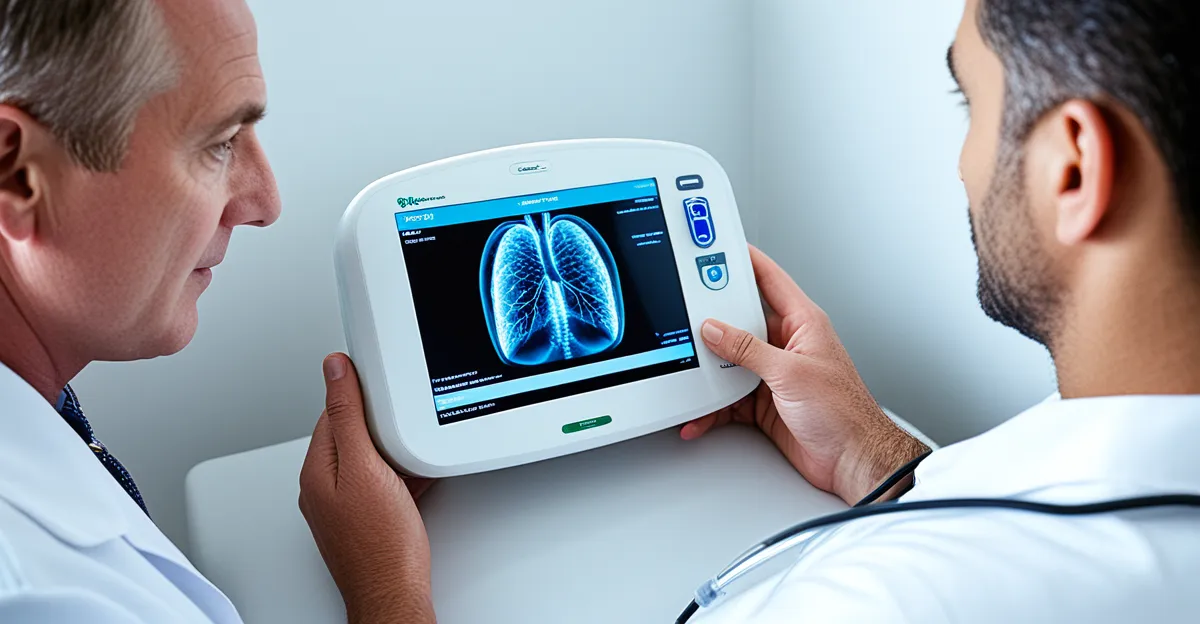Enhancing Accessibility and Reducing Wait Times Through Telemedicine in the UK
Telemedicine advantages UK have had a profound impact on healthcare accessibility, especially for rural and underserved populations. By leveraging digital platforms, telehealth services allow patients to consult clinicians without the usual geographic or transportation barriers. This is particularly vital for communities distant from hospitals or GP surgeries.
One key benefit is the significant reduction in wait times. NHS telehealth services streamline consultations through online triage systems, enabling clinicians to prioritize urgent cases faster. Patients receive quicker diagnoses and advice, which prevents clinic backlogs and emergency room overcrowding. This efficiency is a cornerstone of telemedicine advantages UK.
Additional reading : How Can Innovative Policies Improve UK Healthcare Accessibility?
The NHS has actively implemented initiatives such as video consultations and remote triage, which illustrate the real-world impact on service delivery. These programs not only expand access but also optimize the workload of healthcare professionals. Patients experiencing minor ailments or follow-up needs can now be managed effectively without the need for physical visits, exemplifying how NHS telehealth services improve the patient journey.
In summary, telemedicine in the UK is revolutionizing how care is delivered, offering enhanced accessibility and notably reduced wait times, which are crucial for maintaining timely and equitable healthcare.
Also to see : How Can Lifestyle Changes Influence UK Health Initiatives?
Improving Chronic Disease Management and Patient Monitoring
Effective chronic disease management UK increasingly relies on telemedicine benefits to support patients with conditions like diabetes, hypertension, and asthma. Remote patient monitoring plays a vital role by enabling clinicians to track health metrics continually without requiring frequent in-person visits. This ongoing oversight allows for timely interventions when anomalies or deteriorations are detected, improving long-term outcomes.
For example, sensors and wearable devices can transmit glucose levels or blood pressure readings directly to healthcare teams. These data feed into digital platforms where clinicians analyze trends and adjust treatments remotely, enhancing responsiveness. Such methods reduce hospital admissions and empower patients to take more active roles in their care.
In addition, smartphone apps and web portals facilitate seamless communication between patients and health professionals. Tools designed for medication reminders, symptom logging, and educational content support adherence to treatment plans. This integration of technology embodies key telemedicine advantages UK, improving both patient quality of life and system efficiency.
The NHS has embraced pilot projects combining remote patient monitoring with virtual consultations, yielding promising results in chronic disease control. These initiatives demonstrate how telemedicine benefits extend beyond acute care, fostering a proactive and personalized approach in managing complex, long-term illnesses.
Enhancing Patient Convenience and Satisfaction in Healthcare Delivery
Telemedicine advantages UK extend significantly to patient convenience telemedicine, transforming how patients engage with healthcare. Remote consultations UK allow individuals to access medical advice from the comfort of their homes. This flexibility reduces the need for travel and time off work, making healthcare more accessible for busy or mobility-limited patients. For example, a working parent managing a chronic condition can schedule virtual appointments outside traditional office hours, enhancing care continuity without disruption.
Patient experience NHS offers through telemedicine often ranks highly, as many report feeling more at ease and empowered during virtual visits. This satisfaction stems from shorter wait times, personalized interactions, and the ease of communication via digital platforms. The integration of telemedicine with NHS patient portals supports seamless appointment scheduling, access to medical records, and direct messaging with clinicians, further improving convenience.
Moreover, remote consultations UK bolster engagement by reducing barriers like transportation issues or childcare needs, which traditionally hinder healthcare access. As such, patient convenience telemedicine not only elevates individual satisfaction but also promotes timely care seeking, a critical element in effective health management. This model exemplifies the digital transformation within the NHS aimed at better aligning services with patient lifestyles.
Recent Advancements and Integration of Telemedicine within the NHS
The NHS telemedicine advancements have accelerated the integration of digital technology across UK healthcare. A significant shift includes the widespread rollout of video consultations, which facilitate real-time interaction between patients and clinicians without physical visits. These virtual appointments are supported by digital triage systems that efficiently assess symptom severity, helping prioritize care and reduce unnecessary in-person consultations.
Hospital-in-the-home programs exemplify successful NHS digital initiatives, enabling patients with conditions like COPD or post-surgical recovery to receive complex treatments remotely. These models improve patient outcomes by combining clinical expertise with home-based care, minimizing hospital stays and infection risks.
Healthcare professionals actively participate in developing and optimizing these technologies. Their expert perspectives highlight the benefits of streamlining workflows and enabling targeted interventions through data-driven insights. However, maintaining clinical quality in virtual environments remains a priority.
Such UK healthcare technology integration demonstrates the NHS commitment to transforming traditional care pathways. By embracing these digital tools, NHS telehealth services deliver more accessible, efficient healthcare that adapts to patient needs while easing system pressures. This ongoing evolution creates a foundation for broad telemedicine advantages UK-wide, ultimately enhancing care delivery nationwide.
Challenges and Considerations in Telemedicine Adoption
Exploring telemedicine challenges UK reveals critical issues affecting widespread implementation. One prominent obstacle is the digital divide healthcare, where vulnerable populations face limited internet access or lack familiarity with digital tools. This disparity restricts the reach of telehealth services, especially among elderly patients and low-income groups. Addressing this requires targeted efforts to improve digital literacy and provide necessary devices.
Privacy and data security concerns also present significant telehealth limitations. Ensuring that sensitive patient information remains confidential under UK regulations demands robust cybersecurity measures. Trust in digital platforms impacts both patient willingness to engage and clinician confidence in remote care delivery.
Furthermore, adapting clinical workflows poses challenges. Both healthcare professionals and patients need support to navigate new technologies and overcome resistance to change. Training programs and clear guidelines help smooth the transition and maintain care quality.
Recognizing these challenges is essential to capitalizing on telemedicine advantages UK. Solutions that bridge digital gaps, uphold stringent data protection, and foster user competence will reinforce healthcare accessibility and efficiency. Through addressing these issues, telehealth can realize its full potential within NHS telehealth services, ensuring equitable and safe care for all patients.









